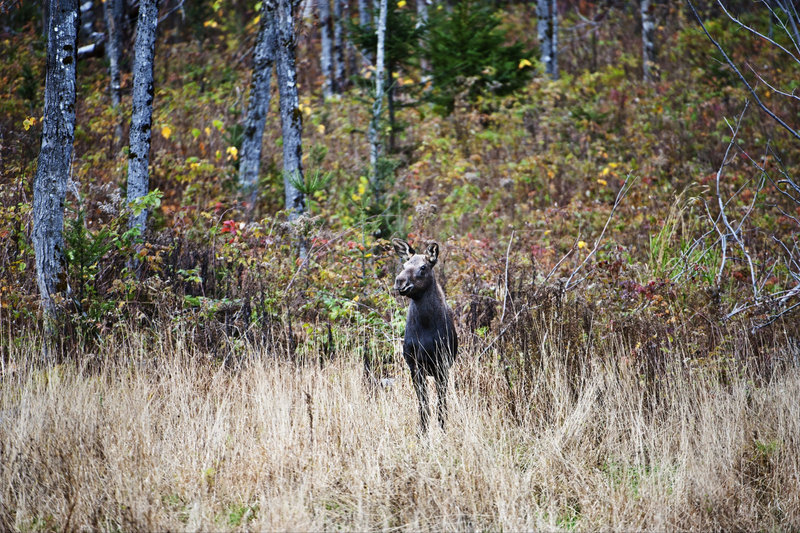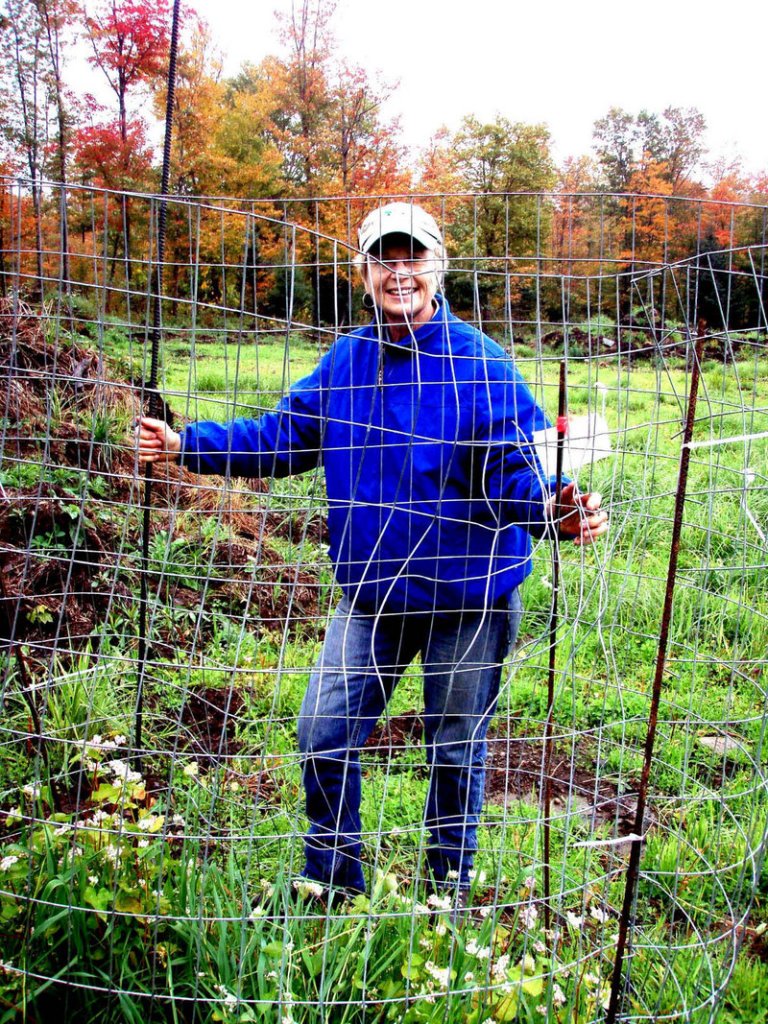The Rangeley Region Guides and Sportsmen’s Association is one of Maine’s oldest outdoor clubs at 116 years old. But the work the club has done the past two years puts it at the forefront of wildlife work in the state today.
Two weeks ago Rangeley club volunteer Marcia Baker was honored by the state for her work on deer food plots in the western mountains. Deer food plots have been effective growing wild deer herds in places like Michigan and Mississippi, but they are relatively unknown in Maine.
Baker not only took the blueprint for bolstering whitetail deer populations and used it here, she experimented with new ways to grow deer food plots in Maine’s woodland and recruited a corps of some 40 volunteers along the way. Baker’s personal goal is to spread deer food plots throughout the state — combating once and for all the hardships whitetail deer face trying to survive the tough Maine winters.
The plots help not only deer, but also moose, turkey, bear and as many as 50 species of songbirds, studies show.
While the Maine Department of Inland Fisheries and Wildlife has put money and effort into trying to grow the deer herd after the historically hard winters of 2008 and 2009, the herd is far from the size it was 10 years ago, state biologists say. Maine State Biologist Lee Kantar said even in southern Maine the herd has dwindled.
Finding ways to help the deer herd in the western mountains, one of the state’s deepest snow belts, is even more of a challenge. But two years ago, the Rangeley club wanted to try creative means to bring the herd back.
State wildlife biologists discourage feeding deer because it spreads chronic wasting disease, and in some instances causes the deer to start depending on the handout. However, food plots, which provide natural forage for the deer in a wild setting, have had success in other states with a big-game whitetail tradition.
“Feeding deer has always been a controversial topic, and the members of our club were deadlocked on the issue. It was a very emotional conversation,” Baker said.
So working with state biologists on developing clover seeds that would grow in the pine forests of Maine, and working with paper companies willing to donate land to the effort, the Rangeley club developed eight acres of deer food plots that they’re monitoring for use by grazers. The plots are on 4 acres of Seven Islands Land Company land and 4 acres of land donated to the effort by Wagner Forest Management company.
“We’re all sportsmen, hunters and fishermen. Besides being foresters we’re also all sportsmen, we’re all interested in doing all that we can to help deer recover,” said Sam Spaulding, a forester with Wagner, and a member of the Rangeley club’s board of directors.
“We all live in the community and are all a part of the community. We like to give back to it.”
While the full effect of the deer plots on sustaining deer through the winter is yet unknown, Baker’s blog details two years’ worth of communitywide enthusiasm and some signs of whitetail visitations to the land.
The seed mix Baker developed with state wildlife biologists not only grew in the acidic soil of the forest land; it grew clover in abundance.
“I’m not a scientist. But we just worked on a mix that we thought would really work on the logging land,” said Baker, a retired therapist and wildlife artist.
Preparing the soil with lime would have been prohibitively expensive, so Baker looked to the local biomass plant in Stratton to see if she could use ash wood chips, a fertilizer that helps decrease the acidity of the soil. The biomass plant joined the effort and returned wood chips back to the forest. Borelex Stratton Energy was throwing out its wood ash at a dump in Norridgewock. Now it’s carting the wood chips around the Saddleback mountain range to the woodland deer plots near Rangeley.
“They were bringing it to spread on the dump, but putting the wood chips back into the forest is truly recycling,” Baker said.
The past two years, the seeds have been spread and planted by the 650-member club in July. They produced rich clover right about now, giving the deer a boost heading into winter. The seed mix is made up of clover, oats and rye grass.
“You need the tops of the clover to show just before frost. That’s when you want the deer to eat, right before October and November,” Baker said. “The clover was very high in protein; it will fatten them up in giving that extra layer of fat to help them withstand winter. In the first year, the plot in August was right up to my thigh. When you see that, it makes you want to do more plots.”
As the state’s largest deer plot program heads into its third year, its success is still undetermined. Club members monitor plot usage with circular enclosures of wire fence; the height of the clover inside the fence, where animals can’t graze, is compared to the height of the browsed clover around the fenced-in areas. There is a marked difference, and the wildlife cameras set out by the club have caught deer moving in the fields.
While the future of the pilot program is uncertain, the enthusiasm around it is not. Baker is already trying to find ways to grow the project. This year she did research to come up with experimental plots that included turnips. And last spring, she held a workshop to teach 11 small landowners how to grow deer food plots.
“Biologists say it will take 10 years of hard work by small property owners to get back to where the deer herd was in the 1980s. Our little plots are just a drop in the bucket,” Baker said.
Staff Writer Deirdre Fleming can be contacted at 791-6452 or at:
dfleming@pressherald.com
Twitter: Flemingpph
Send questions/comments to the editors.





Success. Please wait for the page to reload. If the page does not reload within 5 seconds, please refresh the page.
Enter your email and password to access comments.
Hi, to comment on stories you must . This profile is in addition to your subscription and website login.
Already have a commenting profile? .
Invalid username/password.
Please check your email to confirm and complete your registration.
Only subscribers are eligible to post comments. Please subscribe or login first for digital access. Here’s why.
Use the form below to reset your password. When you've submitted your account email, we will send an email with a reset code.